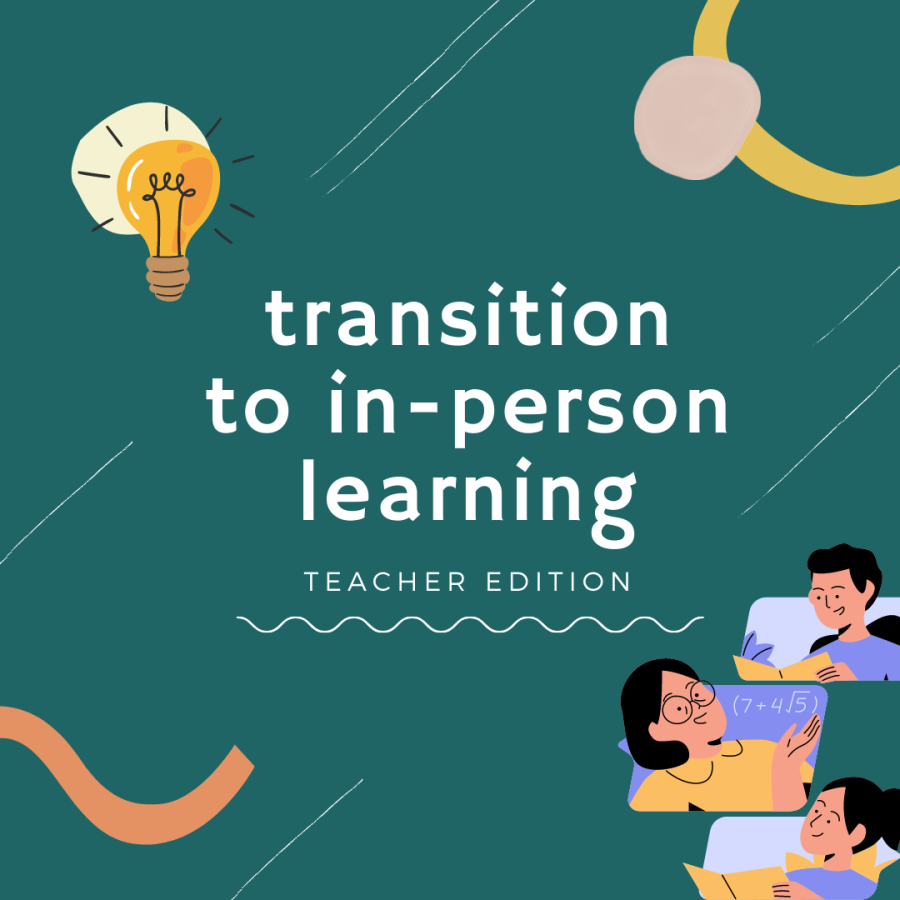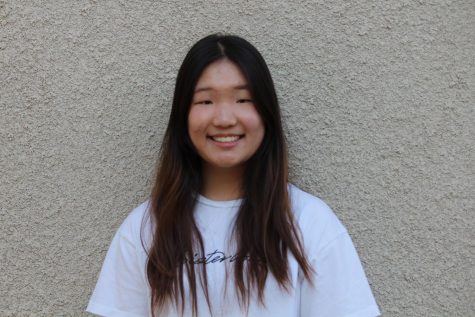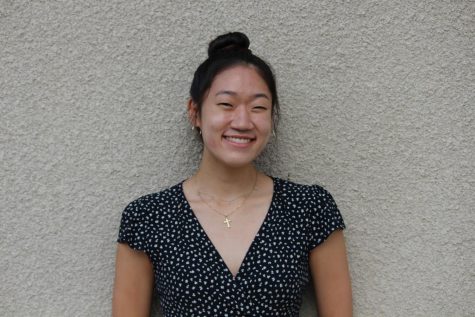In-person learning: teacher’s perspective
December 9, 2021
The 2021 year brought about distance learning, hybrid learning and, finally, in-person learning. Students and teachers alike had to adjust to many new academic environments. At the start of the 2021-22 academic year, West Ranch made the transition to full in-person learning with teachers working hard to provide the best education in the physical classroom.
New Transitions
Teachers have switched learning platforms and formats before, when all students attended school online through Google Classroom, Google Meet, Zoom and Canvas during the pandemic.
According to AP Human Geography and Modern Civilizations Teacher Mrs. Rojas, “We all had to learn how to use Zoom and deal with the internet going out or transitioning our lessons we would do in-person to some kind of online format, so last year was definitely more challenging.”
The return to a sense of normalcy has been a relief for the dedicated faculty and hardworking students, especially after a year of live class meetings and asynchronous work.
AP Computer Science Teacher and West Ranch Baseball Coach Mr. Burrill said, “I think the last semester of last year was more challenging than this year. I think it’s hard to be motivated by someone through a screen versus someone that’s standing right in front of you.”
All West Ranch staff stepped foot on campus in late March 2021, beginning the hybrid-learning system with only a few students in sight. The fall semester of 2021 brought West Ranch back to full capacity, all West Ranch students and staff together again.
Challenges Along the Way
While students have had to readjust to pre-pandemic education, teachers face new challenges in various aspects of their classroom. After distance learning and Zoom classes, a shield from COVID exposure, in-person COVID regulations and restrictions are enforced on campus, creating new barriers for teachers and students within the classroom.
Mr. Holland, one of West Ranch’s AP World History teachers, compared the abrupt change to distance learning in 2020 and the transition back to campus. “Coming back was a little bit easier but then again, we were coming back with masks, coming back with students who have deficits, coming back to social distancing and quarantine,” Holland explained. All these things, it wasn’t an exact ‘let’s just come back.’ It had its speed bumps.”
Similar to the few months in the hybrid-learning system, COVID safety precautions carried over from the previous school year, but the integration of these rules in full classrooms have caused new, indirect challenges to arise.
“I think the most challenging part is students being absent,” Mrs. Rojas commented. “My absent rates have been up a lot versus when we were pre-COVID, so that’s been challenging because I always have to make sure that the students that aren’t here know what they missed.” She noticed that a student “could be out for 3 or 4 class periods” and on a block schedule, they would be “missing a lot of information.”
West Ranch teachers continue to adapt to the natural consequences of the pandemic in their classroom and pioneer through the current intermediate-pandemic education form.
Academic Culture
The academic culture of in-person learning after the pandemic has been a point of interest for teachers as well. Distance learning consisted of Zoom screens, WIN days and shorter class periods for more than a year, all impacting the pacing and delivery of curriculum. Merging students’ home and academic environment created hardships on students’ mental health during the pandemic, but also left lingering implications for teachers in the first semester back.
Mrs. Rojas said, “I know that there’s a lot of students having a hard time adjusting back to the rigors of school and studying for tests and getting back on a schedule.” With various changes to formats of learning and difficult adjustment periods, West Ranch is clearly hard at work navigating a new frontier of education.
Within the classroom, however, teachers were met with different responses to the pre-pandemic teaching methods from students.
AP Art History and AP Art teacher Mrs. Rush shared her insights on the technology barrier between students: “When we came back, I felt like students might want to be with their phones more and I think that it’s just because they’re used to it. It’s getting better and I think that all of us just need a little more self-control with our phones. It doesn’t feel like [students] gravitate to [their phones] as quickly or as much.”
Returning back to a physical classroom environment for students has mitigated these residual habits. Mrs. Rush added, “The more we are kind of interacting around each other, I think the less they want to be on [their phones] in class.”
Throughout this unprecedented first semester, educators on campus have persistently navigated through each phase with the common goal to teach their students.
Mr. Burrill concluded, “Being back here on campus, I got to be honest, it’s been great. I’ve enjoyed it, having everyone back. I think the work ethic and just the amount of learning that’s happened between last year and this year, I think is quite significant.”



